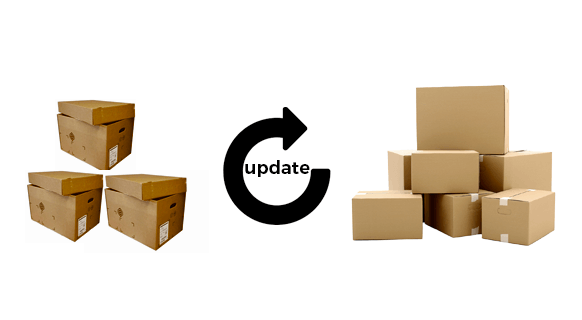Upgrade All Python Packages with Pip: A Quick Guide
Learn how to effortlessly upgrade all your Python packages using pip, ensuring your projects run smoothly with the latest features and security updates.
Learn how to effortlessly upgrade all your Python packages using pip, ensuring your projects run smoothly with the latest features and security updates.
Keeping your Python packages up-to-date is crucial for security and leveraging the latest features. This guide provides a streamlined approach to managing Python package upgrades using the pip-review tool.
Install the pip-review package. This package provides a convenient way to manage Python package upgrades. Use the following command in your terminal or command prompt:
pip install pip-reviewUse pip-review to interactively upgrade packages. Run the pip-review command without any arguments. It will list all outdated packages and prompt you to choose which ones to upgrade.
pip-reviewAlternatively, use pip-review to upgrade all packages automatically. Be cautious with this approach, as it might introduce compatibility issues.
pip-review --autoImportant Considerations:
pip install --upgrade <package_name>.This code demonstrates how to use the 'pip-review' tool to manage Python package upgrades. It explains how to install 'pip-review', use it interactively to choose which packages to upgrade, and upgrade all packages automatically. It also shows how to upgrade a specific package manually. Additionally, it emphasizes best practices such as using virtual environments, testing after upgrades, and utilizing version control.
# Example demonstrating the use of pip-review for managing Python package upgrades
# --- Using pip-review interactively ---
# 1. Install pip-review (if not already installed)
# In your terminal: pip install pip-review
# 2. Run pip-review to list outdated packages and choose upgrades
# In your terminal: pip-review
# Example interaction:
# >>> pip-review
# ... (list of outdated packages) ...
# Package Current Available Action (u=upgrade, s=skip, q=quit)
# ---------------- -------- ---------- -----------------------------------
# requests 2.25.1 2.28.1 u
# beautifulsoup4 4.9.3 4.10.0 s
# ...
# --- Using pip-review to automatically upgrade all packages ---
# CAUTION: This can introduce compatibility issues. Test thoroughly after!
# In your terminal: pip-review --auto
# --- Upgrading a specific package manually ---
# In your terminal: pip install --upgrade requests
# --- Best Practices ---
# - Use virtual environments to isolate project dependencies:
# python -m venv myenv
# source myenv/bin/activate
# - Test your application thoroughly after any package upgrades.
# - Use a version control system (like Git) and commit changes before upgrading.Explanation:
pip-review if you haven't already.pip-review interactively. The example output demonstrates how the tool presents outdated packages and lets you choose which ones to upgrade.pip-review --auto) but emphasizes caution due to potential compatibility issues.requests in this case) using pip install --upgrade.This example provides a clear and practical guide to using pip-review for managing Python package upgrades while emphasizing best practices to avoid common pitfalls.
pip-review usually handles this well, but it's good practice to review the output and ensure all dependencies are met.requirements.txt: After upgrading packages, especially in a project with a requirements.txt file, regenerate this file using pip freeze > requirements.txt to reflect the latest versions.pip-review is a great option, other tools like pip-tools and poetry offer more comprehensive dependency management, including pinning specific versions and resolving complex dependency trees.pip install --upgrade pip: It's a good practice to keep your pip package manager itself updated to benefit from the latest improvements and bug fixes.This document summarizes how to upgrade Python packages using the pip-review tool.
Installation:
pip-review package using pip:
pip install pip-reviewUsage:
Interactive Upgrade:
pip-review to list outdated packages.Automatic Upgrade (Use with caution):
pip-review --auto to upgrade all outdated packages automatically.Important Considerations:
pip install --upgrade <package_name> for granular control over individual package upgrades.By following these practices and utilizing the tools and techniques outlined in this guide, you can ensure that your Python projects remain secure, up-to-date, and benefit from the latest advancements in the Python ecosystem. Remember to consult package documentation, leverage community resources, and prioritize thorough testing to make your Python package upgrades as smooth and efficient as possible.
 How to Update All Python Packages - ActiveState | The pip package manager can be used to update one or more packages system-wide. This guide shows how to update all Python packages for Windows and Linux.
How to Update All Python Packages - ActiveState | The pip package manager can be used to update one or more packages system-wide. This guide shows how to update all Python packages for Windows and Linux. How to upgrade all Python packages with pip? | Better Stack ... | Better Stack lets you see inside any stack, debug any issue, and resolve any incident.
How to upgrade all Python packages with pip? | Better Stack ... | Better Stack lets you see inside any stack, debug any issue, and resolve any incident. Here is how to upgrade all Python packages with pip in Python | To upgrade all the Python packages that are installed on your system using pip, you can use the pip freeze and pip install commands. The pip freeze command ...
Here is how to upgrade all Python packages with pip in Python | To upgrade all the Python packages that are installed on your system using pip, you can use the pip freeze and pip install commands. The pip freeze command ... Upgrade All Python PIP Packages | The discussion could go on for days on why I should be using virtualenv. On my
Mac, I am not...much anyway. Get over it. Given this reality, I have a number of
packages installed using the Python Package Index (pip) and want a command to
keep them current. Digging
Upgrade All Python PIP Packages | The discussion could go on for days on why I should be using virtualenv. On my
Mac, I am not...much anyway. Get over it. Given this reality, I have a number of
packages installed using the Python Package Index (pip) and want a command to
keep them current. Digging How To Update All Python Packages · GitHub | How To Update All Python Packages. GitHub Gist: instantly share code, notes, and snippets.
How To Update All Python Packages · GitHub | How To Update All Python Packages. GitHub Gist: instantly share code, notes, and snippets.